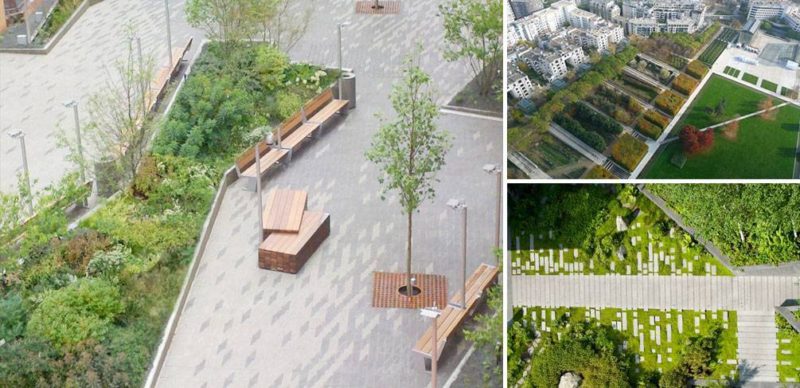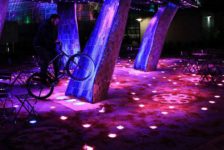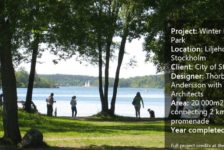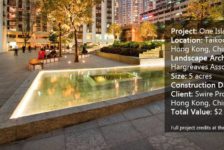Article by Jeanne Connolly Planting design have you stumped? Take a minute to consider these essential components of planting design that should be applied to EVERY project! When used correctly, plants can create an empowering design that evokes all of the senses and draws the viewer in for more. To say that planting design is complex would be an understatement. This combination of both plant science and the artistic vision can be challenging to both the botanist and the landscape architect. What we want to do is find the place between these two worlds that creates a scene pleasing to both sides of the brain. But where to start? And out of the endless species of plants, which ones to use? There are 10 important considerations that need to be made in order to create a successful planting design. Let’s get started!
Planting Design
1. Analyze your site’s existing conditions
As James Van Sweden says in “Gardening with Nature,” “Consider the site’s natural framework.” A good site Inventory and analysis is essential for every project and can go into great detail, but when it comes to selecting plants, it is especially important to consider the climate, soil type, and topography.
-
Know and understand hardiness zones
This is an essential key to selecting plants for your project. The plants you would select in Florida probably would not survive in a colder region such as Michigan. If you are not sure, use the Plant Hardiness Zone Map. This map, created by the United States Department of Agriculture (USDA), shows the average lowest winter temperature in 13 different zones determined by their location in the United States. Each zone represents a 10-degree Fahrenheit difference, with Zone 1 as the coldest and Zone 13 as the warmest.

2012 update of the Hardiness Zone Map. Image Credit: By USDA-ARS and Oregon State University (OSU)
-
Look to Existing Vegetation
Existing vegetation can tell you which plants already thrive in your site’s soils and which ones don’t. Consider using plants that require similar soil and growing requirements. This can make the soil analysis and plant selection a little easier, although, a soil test never hurts to be just a little more accurate.
-
Use the Natural Topography to Your Advantage
Pay attention to the natural topography of your site and use it as an advantage in creating your intended experience. Van Sweden mentions, “An upward-sloping garden has the drama of a raked stage, whereas a downward-sloping garden does not reveal its mysteries until visitors walk through it and then look back from below.” Be sure to find the problem points where the drainage might be an issue, such as steeper slopes. Also, be aware of the difference in caring for plants on steep slopes vs. flat land.
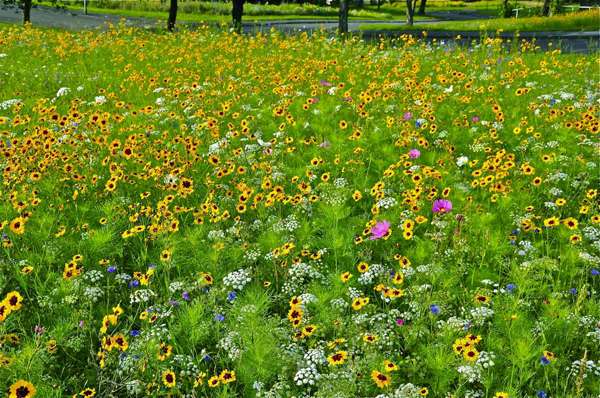
Planting display from Nigel Dunnett; credit Nigel Dunnet
2. Be aware of the Environmental Impact
Aesthetics are only one part of the planting design process. As you select plants and materials, think about what benefits they can provide to your site ecologically. Consider native plants that are already adapted to the environment and require less maintenance and fewer extra pesticides. Also, recognize the role of water in your design and consider water management practices such as rainwater catchment and harvesting systems.

Mixed boarder used to great effect; credit: Nigell Dunnett
3. Identify the Users’ Needs
Before jumping into your design, you need to identify your clients’ or users’ needs. Always make sure you ask the right questions when the opportunity strikes. Do they need more space? What are their favorite plants or color schemes? What specific problems do they want to see addressed? If your site is located in a public area, spend some time there and notice how the space is used and how people interact with it. Take note of noticeable problem areas that need to be resolved.

The High Line nestled in among the buildings; credit: shutterstock.com
4. Connect to the Context
Take a minute to step back and look at the big picture. What is the setting surrounding your site? Identify whether it is urban, residential, natural, etc. Try to make connections between your design and the surrounding area to maintain a sense of place. You can do this by repeating or including similar plants located within the context of your site.
5. Use a Variety of Forms and Textures
In Oudolf and Kingsburys’ “Designing with Plants,” they make a valuable point: “A good planting should have enough variety of shape to look interesting in a black and white photograph.” Think of your planting design three-dimensionally and picture how the full-grown height and spread of each plant will create and enclose spaces. Trees are the most dominant form, giving the height of the space and enclosure beneath their canopies. The most horizontal forms — such as sprawling ground covers — create width, and shrubs fill in to create balance between the two levels. Don’t forget about texture as you select plants. Texture adds movement and contrast that excites the eye. Plant textures are characterized as coarse, medium, and fine. Coarse textures have the most dominant and bold features, such as huge, irregular leaves or thick branches and thorny twigs. Fine textures have the most delicate and small features, such as thin needles, strappy leaves, tiny flowers, and narrow trunks.
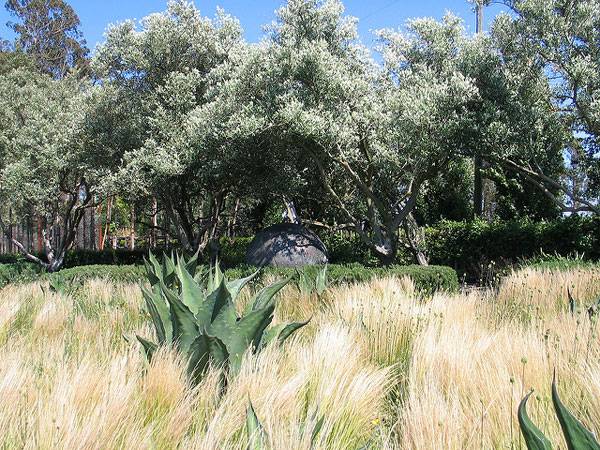
The coarse textured fox-tail agave contrasts boldly against the fine Mexican feathergrass in Oehme Van Sweden’s “Garden of Contrast.”. Photo Credit: Oehme Van Sweden assoc installation at Cornerstone Gardens, by Jennifer de Graaf. Licensed under CC 2.0
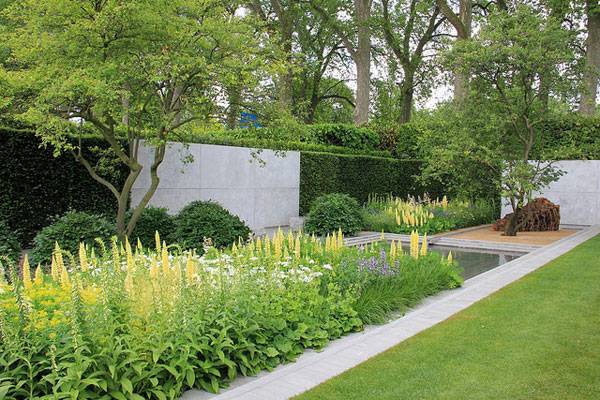
Luciano Giubbilei’s skillful combination of textures and forms also gives the Laurent Perrier gardens contrast, but not quite as harsh as Oehme Van Sweden’s “Garden of Contrast.” Photo credit: RHS Chelsea Flower Show 2014., by Karen Roe. licensed under CC 2.0
6. Establish a Theme
Establish a style or theme on which you can base your plant selection and spatial organization. This is really the inspiration and concept of your design, and you should be able to go back to it as you continue through the design process. It can be formal or informal, or relate to culture, a time setting, a place, a feeling, or anything that you think is relevant to your site.
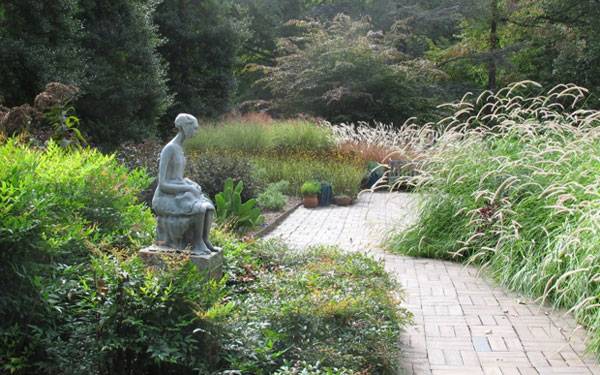
National Arboretum. Photo credit: Source
7. Consider Color and Seasonal Interest
Color can beautifully bring a composition together, but it is only temporary in planting design. When selecting plants, think about the opposite season — will your design still be interesting? A successful planting design provides interest and beauty all year around. This does not necessarily mean you should compose your design completely of conifers, but also think about their fall color and form.
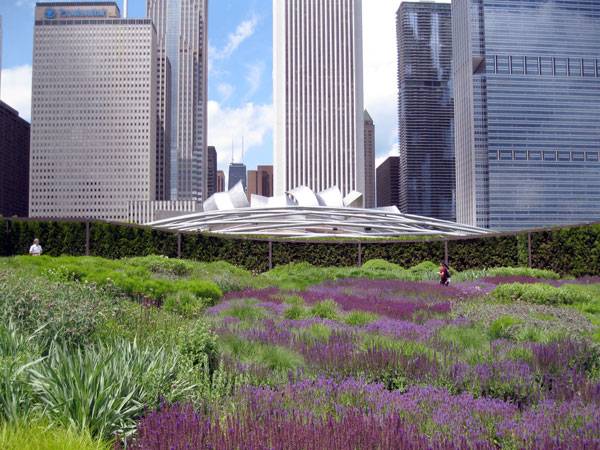
Lurie Garden in Millennium Park, Chicago, Illinois, USA (with Randolph Street skyscrapers in background). By Ruhrfisch (talk) – Photographed it myself, GFDL
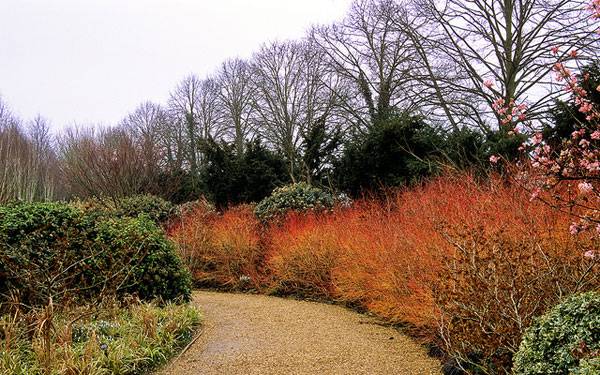
Image credit: Anglesey Abbey Winter Gardens (National Trust), Cambridgeshire, England, by ukgardenphotos, via Flickr. Licensed under CC 2.0
8. Design in Layers
Plant from big to small! Start with your largest trees and work down to your ground cover plants. There should be clear ground, foreground, middle ground, and background layers. Avoid gaps by overlapping and massing plants within your layers, both vertically and horizontally.
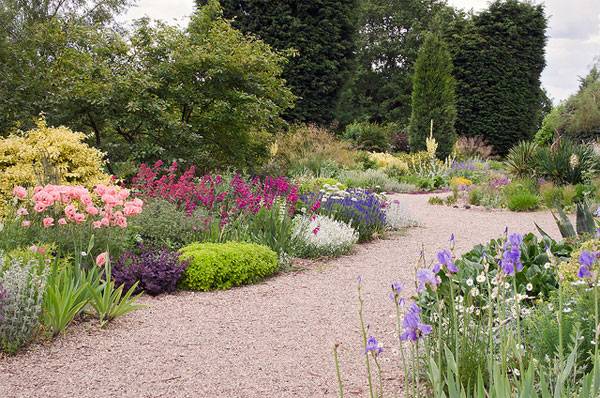
Image credit: Beth Chatto’s Dry Garden, Essex, England, by ukgardenphotos via Flickr, licensed under CC 2.0
9. Group your Plantings
Grouping plants helps create structure and unity, and can achieve your intended amount of enclosure. Massing a certain plant species can give it more contrast and structure among the other elements in your design. Thomas Rainer explains the importance of massing in “Beyond the Border 2: Massing Matters”: “A single flower in a half-acre planting disappears; but a block of 100 (residential), 200 (small park), or 500 (large park) has dramatic impact even from a distance.” The plants you are massing should be planted so that they touch or overlap at full-grown form, connecting the spaces visually. Repetition of masses is also a good technique in order to create a pattern and movement throughout the composition.
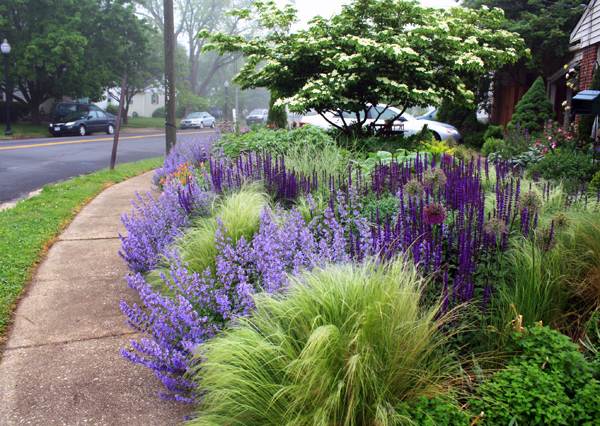
An incredible display of texture and colour; credit: Thomas Rainer
10. Consider the View Sheds
Analyze how the viewer will see your design from every angle. View sheds are very important and are a key to leading people throughout your design. Even before a person enters the site, think about street views. What is leading the viewer in? Maybe there isn’t always a full line of sight, which could spark curiosity about what might be ahead.
Planting Design and Designing With Plants
Now add it all together: Every piece of the process is equally important in creating a successful planting design. Most importantly, have fun with it and make it your own. Do your research and experiment with your own plant combinations and spatial schemes. Picture your finished planting design in black and white. Is it still interesting?
Recommended Reading:
- Planting in a Post-Wild World: Designing Plant Communities for Resilient Landscapes by Timber Press
- Designing and Planting a Woodland Garden: Plants and Combinations that Thrive in the Shade by Timber Press
Article by Jeanne Connolly
Published in Blog


